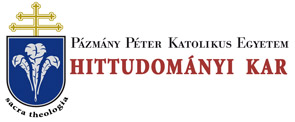Erdő Péter (szerk.): Bűn és isteni irgalom mint a mai ember problémája - Studia Theologica Budapestinensia 30. (2002)
László Vanyó: The Patristic interpretation of 'Redemptio'
returns by Augustine, too: "ipse ut pro omnibus pateretur, ovis est factus. "58 7. The teaching of redemption of St. Augustine is original as regards the sequence of ideas, but he has not one element which could not have been found in the practice and in the prayers of the Church. At the same time in some places he corrected the early ideas of the "rights" of Satan, and deals profoundly the righteouses of redemption. The nature of redemption is one of his central thought, the other one is: man needs redemption. Already the Old Testament knew the consciousness of guilt of man and this was still deepened by the New Testament. The prayers and confessions of sins in the Old Testament ask not only for remission of sin but also its inner mastering, because it is only God who can help man in his powerlessness.59 The consiousness of helplessness, joined to the consciousness of guilt awakens the desire for divine redemption. The sinfulness of man is deduced by Augustine not from being a creature, but from the first man's deed, which is a moral burden to the descendants. The Father reveals the deep gulf between the actual state and the divine vocation of man. The rebellion agains God, pushes man deeper and deeper, his inner order becomes confused, his intellect falls into the domination of concupiscence and instinct. The sinful man, temporalrily or for ever, reaps death in his body and in his spirit. Man, reduced to his helplessness, is in the history of salvation enemy of God, slave of Satan.60 How’emCfjvrioaL kccl ocoocu to ànoAcùAôç, eneLÖr] eupe vb (rjTovpeuou, 'aukAaßeu 'ecp' èavTob vb ebpppéuou: ob yap èû toïç 'lô'lolç ïïoo'l toïç TrAaurjOeïOLU anaç eKLueÏTO to npoßaToi'aAA' vito tî)ç OeÔTrjToç eKopiÇeTO. őloc toDto tó peu cpaLuópeuou it poßccTOu. TOUTeoLu auOponccç, Ta <5è ’ixup aÙTOû, KCCTCC to yeypappéuou, où K eyLUcóoKeTO. obő'eu yàp apapTLaç i) TrAaur\ç ïxuoç rcD àuOpùmiuœ ßico eueoTjppuaTO b 'ecp' eauTou cpépœu to irpoßaTou: 'aAA’ dia eiiebç r)u Oeov ï-xurj bca ttjç toû ßiou nopeiaç ’euTuncjOíjuai., TaÛTa ecpaíueTo, aviva fju ŐLÖaoKaAíai Kai OepanelaL kccl ueKpûu CooTTOirjoeiç Ka\ tcc ccAAa OavpaTa. tovto toluvu to npoßaTOu ’ecp' eav(ov Aaßcbu ô TTOLpriu eu ïïpoç eKeïuo eyeueTO: ôia toûto kccl tt\ toû npoßaTOu cpoui) toïç TTOLpuLOLç AaAeï. ttcüç yàp au excopijoeu auQpconiuri aoQéueia deiaç cpa)ufjç irpooßoArju; 'aAA' 'auOpamlkcoç, cbç 0' au tlç einoL ttpoßaTiKCOQ, fjpïu ÔLaAéyeTai Aéycou T oc èpa TTpoßaTa tt)ç epi)ç cpcoufjç aKobec. 'o ovu ccuaAaßcbu 'ecp' eauTou to írpoßaTOu noLprju kccl ôl' eKeiuou ijpiu (pOeyyôpeuoç kccl npoßacou eoTL Kaï noLprju: eu peu tco àuaAr]cpOéuTL npoßaTOu: eu ôè tco àueLAricpÔTL noLprju. 58 In Joh.ev. tract. 123,5 59 De gr. Chr. et de pecc. or. 25 PL 44;399 46
